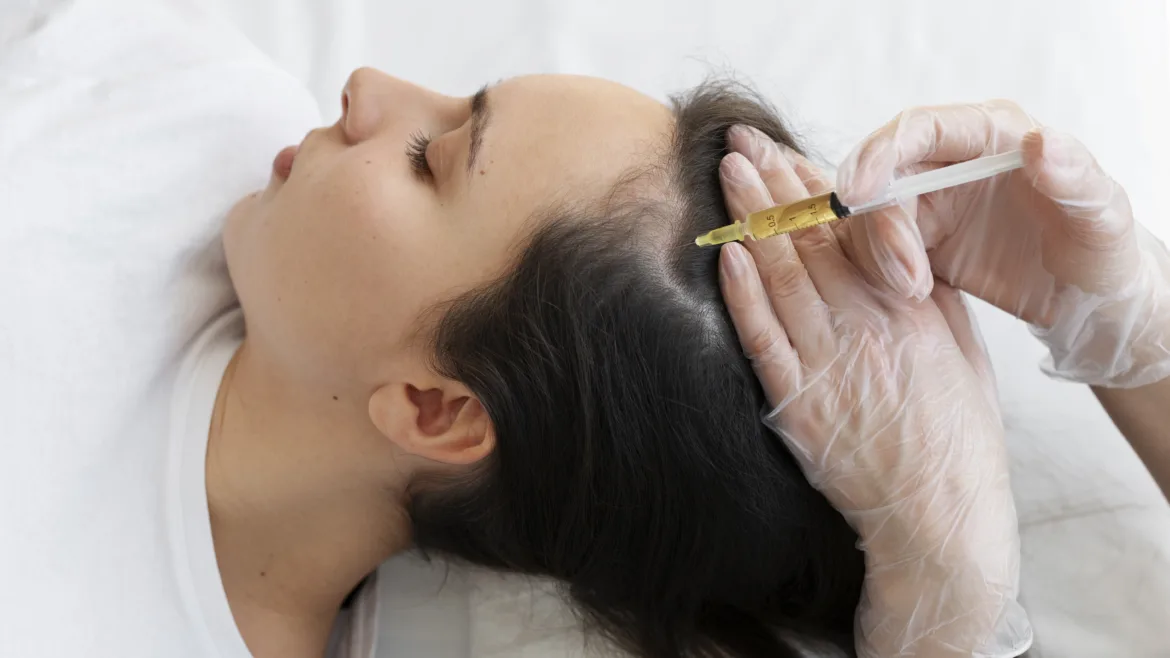Understanding PRP Therapy for Hair Loss
Hair loss is a common issue that affects millions of people worldwide. Platelet-Rich Plasma (PRP) therapy has emerged as a promising treatment to combat hair thinning and stimulate hair growth. Here’s a detailed look at what PRP therapy involves, its benefits, procedure, and considerations.
What is PRP Therapy?
Platelet-Rich Plasma (PRP) therapy utilizes the patient’s own blood to extract plasma rich in platelets. These platelets contain growth factors and proteins that aid in tissue repair and regeneration, making PRP a valuable tool in various medical fields, including dermatology and hair restoration.
How Does PRP Work for Hair Loss?
PRP therapy for hair loss involves injecting the platelet-rich plasma into the scalp, specifically targeting areas experiencing thinning or hair loss. The growth factors in PRP help to:
- Stimulate hair follicle activity
- Promote new hair growth
- Increase blood supply to the hair follicles
- Enhance the thickness of the hair shaft
- Prolong the growth phase of the hair cycle
The PRP Procedure
Step-by-Step Process
- Blood Collection: A small amount of blood is drawn from the patient, similar to a routine blood test.
- Centrifugation: The blood sample is placed in a centrifuge, which spins at high speed to separate the platelet-rich plasma from other blood components.
- PRP Extraction: The concentrated platelets are extracted from the centrifuged blood.
- Scalp Injection: The PRP is injected into the scalp areas that need treatment using fine needles.
Duration and Frequency
The entire procedure typically takes about 60 to 90 minutes. Most patients require multiple sessions (usually three to six) spaced four to six weeks apart. Maintenance treatments may be needed every few months thereafter.
Benefits of PRP for Hair Loss
- Natural and Safe: Since PRP uses the patient’s own blood, the risk of allergic reactions or adverse effects is minimal.
- Non-Surgical: PRP is a minimally invasive procedure with no downtime, making it a convenient option for many individuals.
- Effective: Clinical studies and anecdotal evidence suggest that PRP can significantly improve hair density and thickness.
- Quick Recovery: Patients can typically resume their normal activities immediately after the procedure.
Considerations and Potential Side Effects
Who is a Good Candidate?
PRP therapy is most effective for individuals with early stages of hair thinning and those with androgenetic alopecia (male and female pattern baldness). It may not be as effective for individuals with advanced hair loss or scarring alopecia.
Possible Side Effects
While PRP is generally safe, some patients may experience mild side effects such as:
- Scalp Tenderness: Some soreness or discomfort at the injection sites.
- Swelling and Redness: Temporary swelling or redness at the treatment area.
- Bruising: Minor bruising may occur but typically resolves within a few days.
Limitations
- Cost: PRP therapy can be expensive, and insurance may not cover it as it is often considered a cosmetic procedure.
- Results May Vary: Individual responses to PRP therapy can vary, and not all patients may achieve the desired results.
Conclusion
PRP therapy for hair loss is an innovative and promising treatment that leverages the body’s natural healing processes to combat hair thinning and promote regrowth. While it is a safe and non-surgical option, potential candidates should consult with a qualified healthcare provider to determine if PRP is suitable for their specific condition. With ongoing research and advancements in the field, PRP continues to hold potential as a key player in the fight against hair loss.


1 Comment
Muhammad Usman Jamil
jjjygjhbjh